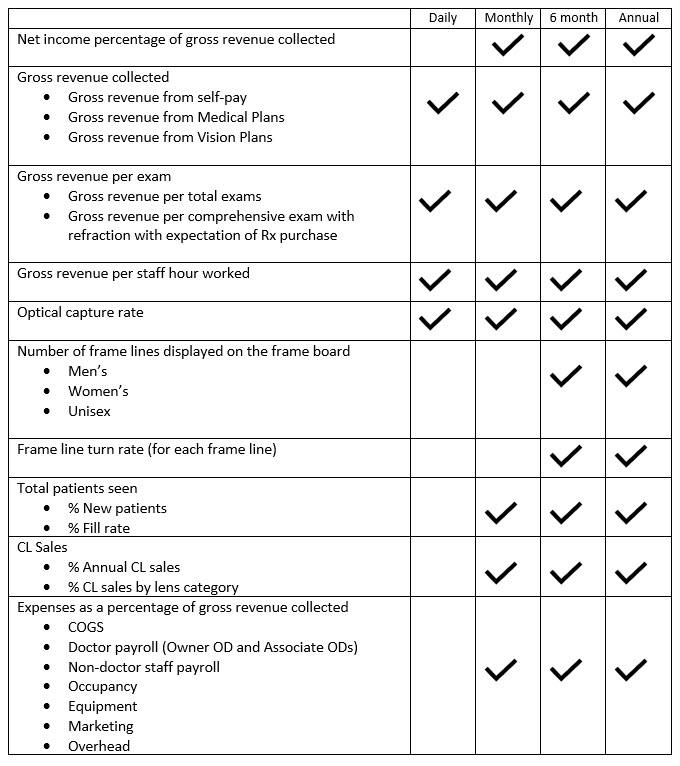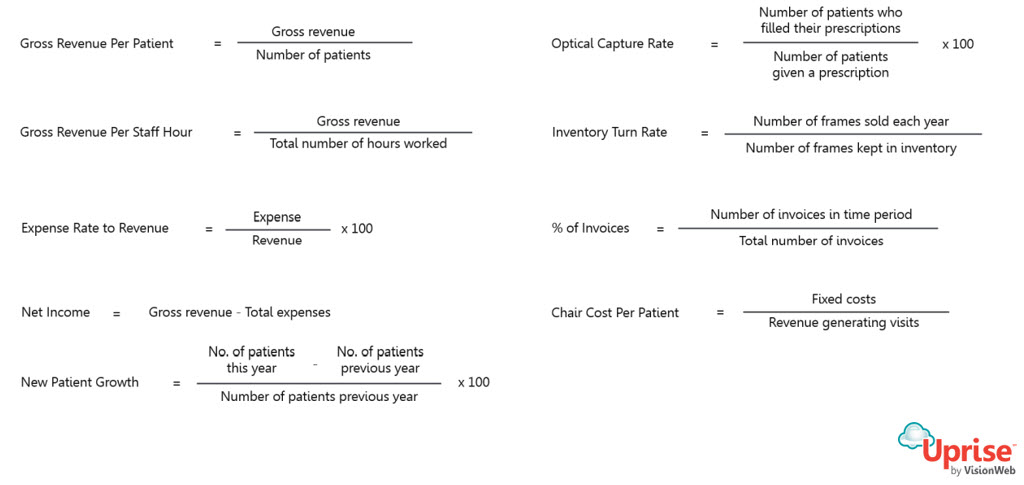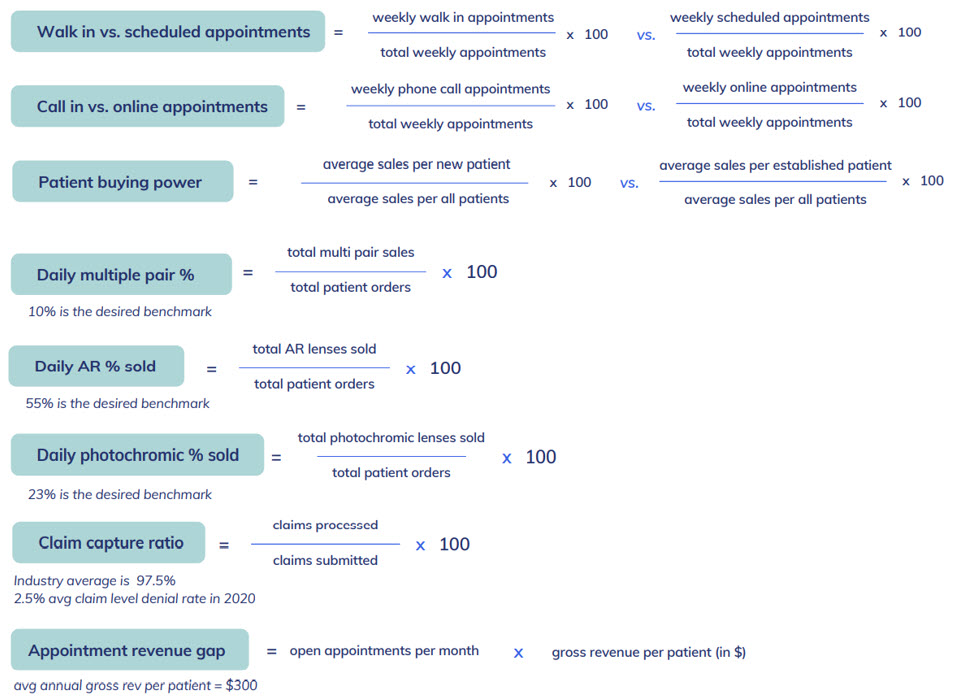By Mark Wright, OD, FCOVD,
and Carole Burns, OD, FCOVD

June 16, 2021
If you want to manage your practice using business principles with a scientific approach, then managing by the numbers is the way to go. Two core challenges with this approach are deciding which numbers to use to make management decisions and how often you will look at those numbers.
Here are the metrics that you must start with to manage by the numbers, as well as how often you should look at those numbers.

How do you collect these numbers?
You have four methods for collecting these numbers: calculate them yourself, have staff make the calculations, pay someone (practice accountant, software programmer) to create this report for you, or purchase a business dashboard that will give you these numbers. We recommend purchasing a business dashboard such as ABB Analyze powered by Glimpse or EDGEPro. We do not recommend you spend your valuable time to create this report yourself.
What do you do with these numbers?
Use these numbers to make business decisions. If your net is a negative number, then something in the practice must be changed.
Obviously, either your expenses are too high or your income is too low. Identify the problem and fix it.
If you have a frame line with less than a three-times turn, then get it off your board and replace it with a better performing frame line. (Exception: Sometimes you use one frame line to sell another frame line. An example, you are using a $600 frame line to sell a $500 frame line. The question then becomes: Is the $600 frame line doing its job?)
Other Articles to Explore
If your cost of goods is 25 percent or higher, then join a buying group or alliance and drive this number closer to 25 percent. By the way, two common mistakes we see people make who join an alliance are: (1) they join too many alliances and thereby dilute their buying power, and (2) they do not take advantage of all the discounts offered by the alliance.
If your capture rate is less than 85 percent, then the problem lies in one or more of the following:
• The doctor is not prescribing in the exam room.
• Doctors and staff are not asking for the sale.
• Doctors and staff do not know how to effectively use closing techniques such as the assumptive sale or the puppy dog technique.
• Doctors and staff do not know how to effectively manage patient objections.
For those doctors and staff members who say they are not in sales, what they are actually saying is they don’t have any problem with patients not receiving the care they need and deserve. We view that as a problem that needs fixed.
Just so there is no misunderstanding, we don’t believe in ever using hard-sell techniques.
Take this week to review your reporting system. If it needs improvement, then make those improvements.





























